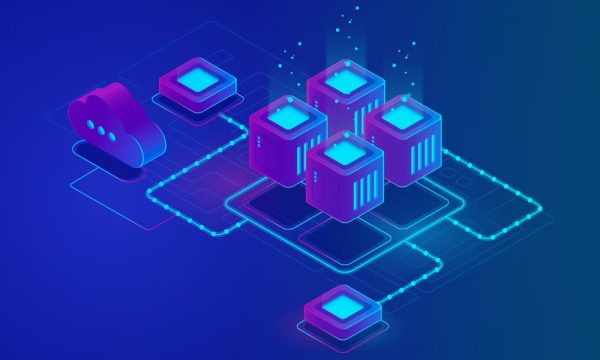The most precious commodity for businesses these days is data. As organizations and individuals continue to generate massive amounts of data per second, it is not enough to capture the data. You must analyze, transform, and extract meaningful insights from the data. Yet, barely 37–40% of companies analyze their data, and 43% of decision-makers in IT companies dread the influx of data that can potentially overwhelm their data infrastructure.
With the need to make quick data-driven decisions and overcome the challenges of disparity of data sources, it is becoming critically important for organizations to develop a data infrastructure that can store, extract, analyze, and transform data efficiently.
There is an urgent need to have a system that can transfer data from the source to the storage system and analyze and process it in real time. AI Data pipeline offers just that.
What is a Data Pipeline?
A data pipeline is a group of components that take in or ingest data from disparate sources and transfer it to a predetermined storage location. However, before the data is transferred to the repository, it undergoes pre-processing, filtering, standardization, and transformation.
How are data pipelines used in machine learning?
The pipeline denotes workflow automation in an ML project by enabling data transformation into the model. Another form of the data pipeline for AI works by splitting up the workflows into several independent and reusable parts that can be combined into a model.
ML data pipelines solve three problems of volume, versioning, and variety.
In an ML pipeline, since the workflow is abstracted into several independent services, it allows the developer to design a new workflow by simply picking and choosing only the particular element needed while retaining the other parts as such.
The project outcome, prototype design, and model training are defined during the code development. The data is collected from disparate sources, labeled, and prepared. The labeled data is used for testing, prediction monitoring, and deployment in the production stage. The model is evaluated by comparing training and production data.
The Types of Data Used by Pipelines
A machine learning model runs on the lifeblood of data pipelines. For instance, a data pipeline is used for data collection, cleaning, processing, and storing data that will be used for training and testing the models. Since data is collected from both the business and consumer end, you might be required to analyze data in multiple file formats and retrieve it from several storage locations.
So, before planning your code stack, you should know the type of data you will be processing. The data types used to process ML pipelines are:

Streaming Data: The live input data used for labeling, processing, and transformation. It is used for weather forecasting, financial predictions, and sentiment analysis. Streaming data is usually not stored in a data set or storage system because it is processed in real-time.
Structured data: It is highly organized data stored in data warehouses. This tabular data is easily searchable and retrievable for analysis.
Unstructured data: It accounts for almost 80% of all data generated by businesses. It includes text, audio, and video. This type of data becomes extremely difficult to store, manage, and analyze since it lacks structure or format. The latest technologies, such as AI and ML, are being used to transform unstructured data into a structured layout for better use.
How to build a scalable data pipeline to train ML Models?
There are three basic steps in building a scalable pipeline,

Data Discovery: Before the data is fed into the system, it has to be discovered and classified based on characteristics such as value, risk, and structure. Since a vast variety of information is required to train the ML algorithm, AI data platforms are being used to pull information from heterogeneous sources, such as databases, cloud systems, and user inputs.
Data Ingestion: Automatic data ingestion is used to develop scalable data pipelines with the help of webhooks and API calls. The two basic approaches to data ingestion are:
- Batch Ingestion: In batch ingestion, batches or groups of information are taken in response to some form of a trigger, such as after some time or after reaching a particular file size or number.
- Streaming Ingestion: With streaming ingestion, the data is drawn into the pipeline in real-time as soon as it is generated, discovered, and classified.
Data cleaning and transformation: Since most of the data gathered are unstructured, it is important to have it cleaned, segregated, and identified. The primary purpose of data cleaning before transformation is to remove duplication, dummy data, and corrupt data so that only the most useful data remains.
Pre-processing:
In this step, the unstructured data is categorized, formatted, classified, and stored for processing.
Model Processing and Management:
In this step, the model is trained, tested, and processed using the ingested data. The model is refined based on the domain and requirements. In model management, the code is stored in a version that aids in the faster development of the machine-learning model.
Model Deployment:
In the model deployment step, the artificial intelligence solution is deployed for use by businesses or end users.
Data pipelines – Benefits
Data pipelining helps develop and deploy smarter, more scalable, and more accurate ML models in a significantly shorter period. Some benefits of ML data pipelining include
Optimized Scheduling: Scheduling is important in ensuring your machine-learning models run seamlessly. As the ML scales up, you’ll find that certain elements in the ML pipeline are used several times by the team. To reduce the compute time and eliminate cold starts, you can schedule the deployment for the frequently used algorithm calls.
Technology, framework, and language independence: If you use a traditional monolithic software architecture, you’ll have to be consistent with the coding language and make sure you load all the required dependencies simultaneously. However, with an ML data pipeline using API endpoints, the disparate parts of the code are written in several different languages and use their specific frameworks.
The major advantage of using an ML pipeline is the ability to scale the initiative by allowing pieces of the model to be reused multiple times across the tech stack, irrespective of the framework or the language.
Challenges of the Data Pipeline
Scaling AI models from testing and development to deployment is not easy. In testing scenarios, business users or customers may be much more demanding, and such errors may be costly to the business. Some challenges of data pipelining are:

Cleaning and preparation challenges: Apart from the technical challenges of data pipelining, there is the challenge of cleansing and data preparation. The raw data should be prepared at scale, and if the labeling is not done accurately, it can lead to problems with the AI solution.
Organizational challenges: When a new technology is introduced, the first major problem arises at the organizational and cultural level. Unless there is a cultural change or people are prepared before implementation, it can spell doom for the AI pipeline project.
Data security: When scaling your ML project, estimating data security and governance can pose a major problem. Since initially, a major part of the data would be stored in a single place; there could be issues with it being stolen, exploited, or opening up new vulnerabilities.
Building a data pipeline should be aligned with your business objectives, scalable ML model requirements, and the level of quality and consistency you need.
Setting up a scalable data pipeline for machine learning models can be challenging, time-consuming, and complex. Shaip makes the entire process easier and error-free. With our extensive data collection experience, partnering with us will help you deliver faster, high-performing, integrated, and end-to-end machine learning solutions at a fraction of the cost.







